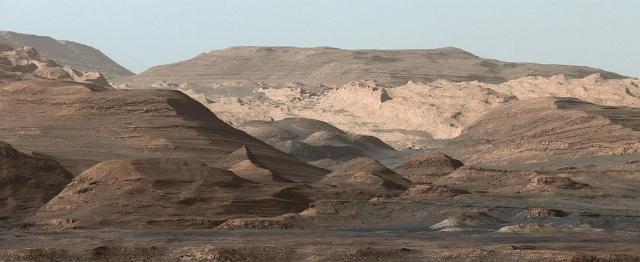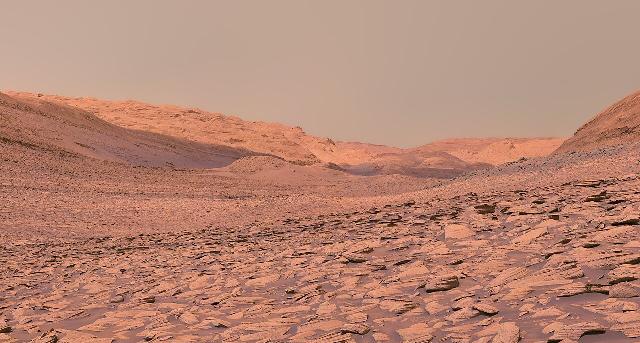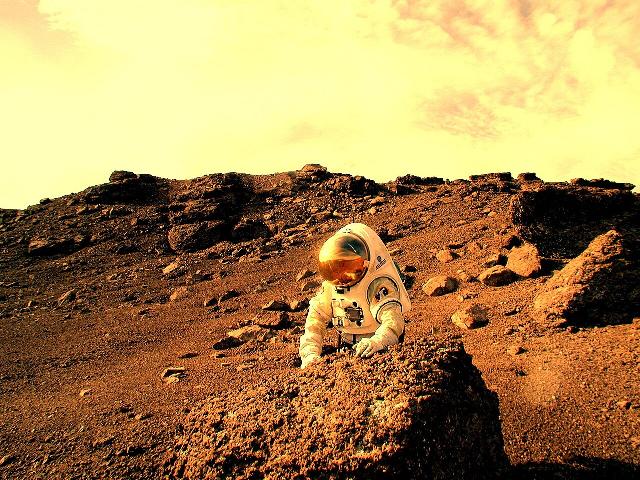Flights to Mars are again being seriously discussed and planned in cosmonautics. You need to prepare for them thoroughly, because the round trip can take about 500 days, and no one will cancel the radiation from cosmic rays and the solar wind by that time. In addition, solar flares and coronal ejections are unpredictably likely to occur, from which future space travelers will need to hide. A group of physicists has developed a system for predicting upcoming proton events in order to warn Marsonauts in time.
Space, although it looks empty, is filled with elementary particles plowing through space with high energy. This cosmic radiation, along with the stream of charged particles from the Sun, is a serious problem for future missions.
For example, Mars, which the American space program has so ambitiously set its sights on, is not protected from cosmic rays. Recent laboratory experiments have shown that traces of organic matter on the surface of the Red Planet are destroyed ten times faster precisely because of cosmic rays, Naked Science reported.
The current norms of the effective radiation dose of astronauts for their entire career are 600 millisieverts. For comparison, a cruise to Mars and back will provide a radiation dose of 930 millisieverts (acute radiation sickness occurs, we recall, with an irradiation of 1000 millisieverts). And this is not taking into account the radiation exposure while working on the surface of the planet.
There are several ways to reduce the effect of cosmic rays. Martian bases can be built in craters, under rocks, and in other terrain conditions — the rock reduces radiation exposure by 4-7%. Another approach is to modernize the shielding in spacecraft and spacesuits.

View of the Martian Mount Sharp through the eyes of Curiosity. The colors are chosen so that the rocks look approximately as if they were on the Ground.
Image source: Wikimedia Commons, NASA.
The unpredictability of cosmic phenomena complicates the task. Although short—term forecasts of solar proton events (ion and proton fluxes from solar flares) exist, they are reliable in near-Earth orbit and the Earth-Moon system. For travelers to Mars — Marsonauts — a different forecast is needed.
The new warning system was proposed by a group of physicists from Germany, the USA and China. In addition, they managed to figure out how far from the shelter the marconaut would be able to travel in order to have time to hide from the sudden flood. The results of the scientific work were published by Space Weather magazine.
The researchers took data from the Curiosity rover detector — from December 6, 2011 (radiation from outer space, the device flew to the Red Planet) and from August 6, 2012 (radiation from Mars, after the device landed on the surface). During all this time, he recorded five events in space and 17 on Mars.
Physicists adjusted the background radiation to the standard and considered those that exceeded the background by 25% to be a solar proton event. That is, when the activity increases, a warning is triggered. Similarly, when the radiation level drops below the threshold, the marsonaut will be informed that it is safe to leave the shelter.

View of the Gediz Vallis valley on Mars through the "eyes" of Curiosity. The colors are selected in such a way as to approximately match the color perception of the human eye.
Image source: Wikimedia Commons, NASA.
Another question is: how long can a person wait for a proton event? The approach with a threshold of 25%, as the scientists emphasize, allows marsonauts to be protected from 90% of the radiation dose during an outbreak.
An analysis of the recorded events showed that an astronaut would have taken refuge in outer space the longest on March 7, 2012 (three days, seven hours, 33 minutes), and on the surface of Mars on May 20, 2024 (one day, 17 hours, 55 minutes). On average, outer space was also a more dangerous place: a day and 18 hours versus 21 hours on the Red Planet.
The authors of the article noted that their forecasts allow the maronauts to move away to a distance that they will cover in no more than half an hour. Although some events give a head start in an hour and a half, it is still impossible to predict the power and peak activity.
The last aspect, the reliability of the warning system, was checked by physicists by comparing false alarms at other radiation thresholds: from 5% to 30%. In outer space, for example, the forecast was triggered with a jump of 9% above the threshold if the system rechecked the result after 15 minutes (which, by the way, is taken away from the astronaut for preparation).
On Mars, the threshold of 25% has become optimal — with it, the probability of a false alarm is also 25%. But on an alien planet, it's better to be safe. Nevertheless, the researchers admitted that in real conditions, the radiation thresholds in outer space and on Mars can be reduced to 15% and 18%, respectively. But there may also be 8% more false positives, that is, a third of all warnings.

